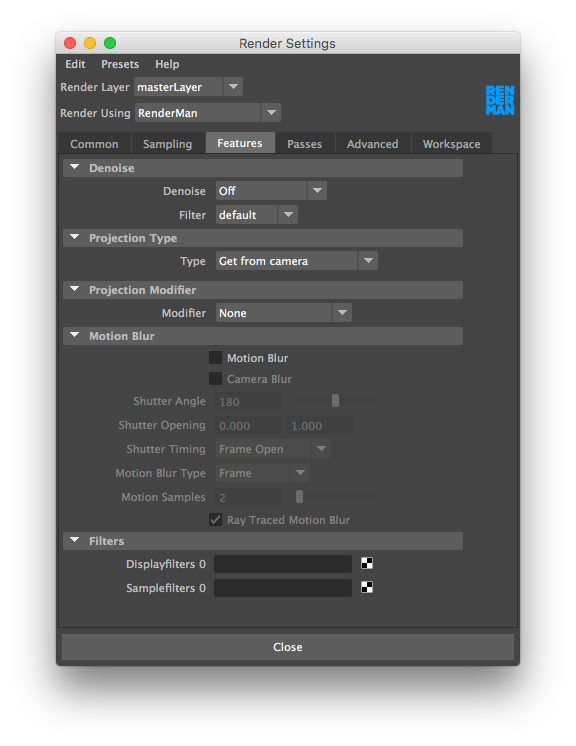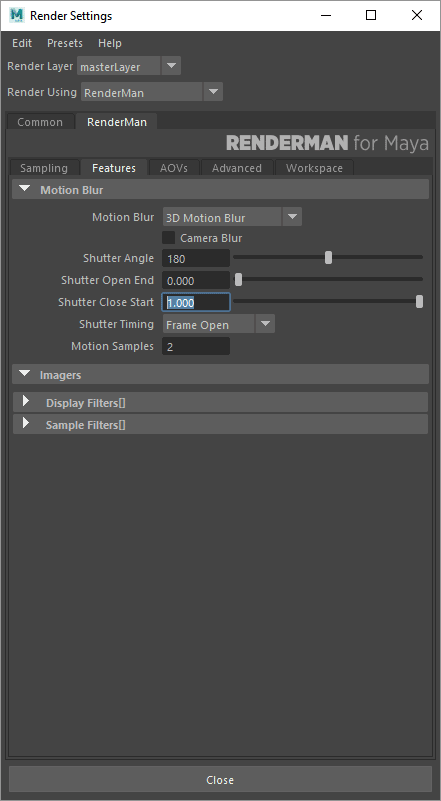The features tab allows you to enable special features of the renderer, such as Motion Blur and Denoising.
Denoise
Here you can turn on denoising which will denoise an image when batch rendering only. Frame denoise will denoise each frame individually, while Cross-frame denoise will calculate multiple frames at once, taking into account motion blur across frames.
Filter: There are a few denoise filter options, mainly you should use the default filter unless denoising volume renders, for which there is a specific volume filter.
Projection Type
Allows a few types of different camera projections to be used. For instance, the PxrCamera projection allows physically based camera controls for doing tilt shift or vignetting. Or the Omnidirectional Stereo projection renders images in a format suitable for VR viewing.
Projection Modifier
Use this to set the PxrRollingShutter projection, which simulates the rolling shutter effects from digital cameras. This is mainly used in conjunction with motion blur.
.
Motion Blur
RenderMan has a number of controls for creating fast and efficient motion blur.
Motion Blur: Enabling motion blur causes moving objects to be blurred along their path of movement in order to prevent temporal aliasing and strobing. When using motion blur, you should increase the number of pixel samples (max samples in the sampling tab), and expect longer rendering times.
- 3D: fully rendered and accurate motion blur
- 2D: motion vectors are calculated but motion blur is not rendered, useful for post processes when outputting AOVs like dPdtime and dPdcameratime
Camera Blur: The renderer will ignore the movement of the camera when computing motion blur when this feature is disabled. If you do move the camera and want everything in the scene to blur accordinglyrealistically, you will need to turn this feature on; however, you should expect this to be a potentially expensive operation since everything in the scene will now undergo motion blurring calculationsblur, creating noise that must converge.
Shutter Angle: Shutter Angle is only meaningful when Motion Blur is enabled. It controls how long the shutter is open during a frame. Measured in degrees a setting of 360 opens the shutter for the entire frame. The larger the angle, the greater the blur, which may increase render times as more samples are needed to smooth out the blur.
...
Filters
These allow the use of Display or Sample Filters.


